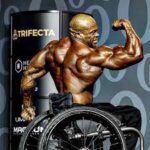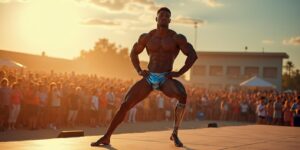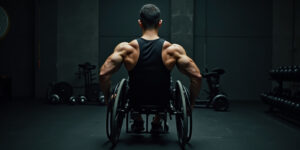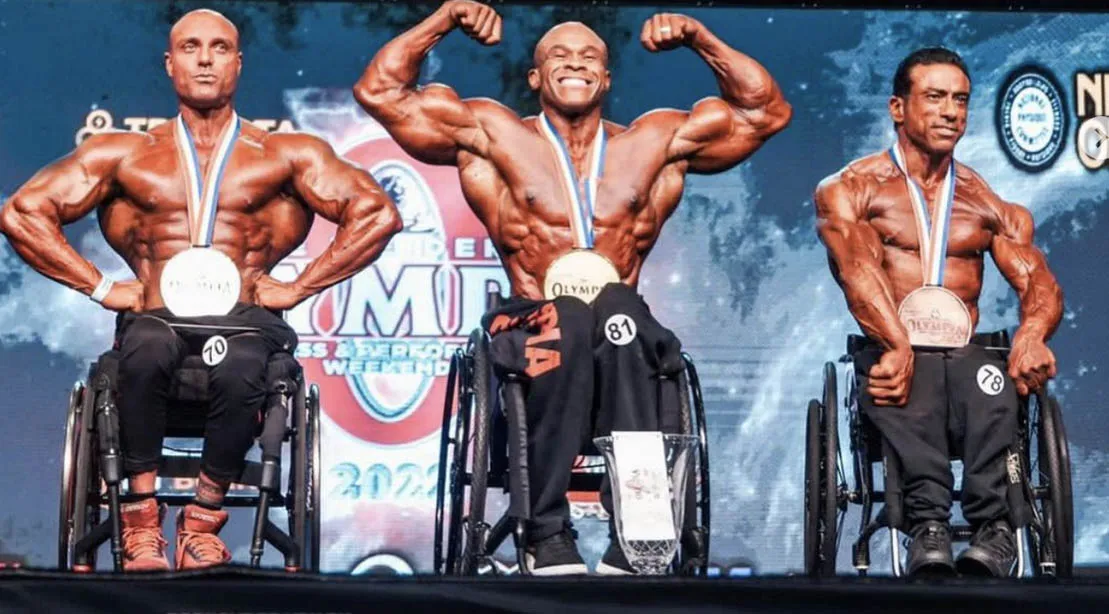
The Evolution of Wheelchair Olympia
The Wheelchair Olympia is a bodybuilding competition for athletes with disabilities. It was first held in 2011, and has been held every year since then. The competition is sanctioned by the International Federation of Bodybuilding and Fitness (IFBB), and is part of the Mr. Olympia weekend. The Wheelchair Olympia has seen a lot of evolution over the years. In the early years, the competition was relatively small, with only a few competitors. However, the competition has grown in popularity in recent years, and now attracts some of the best wheelchair bodybuilders in the world. One of the most notable changes in the Wheelchair Olympia has been the rise of Harold Kelley. Kelley has won the competition five consecutive times, and is considered to be one of the greatest wheelchair bodybuilders of all time. Kelley’s success has helped to raise the profile of the Wheelchair Olympia, and has inspired other athletes to compete. Another change in the Wheelchair Olympia has been the increasing diversity of the competitors. In the early years, the competition was dominated by athletes from the United States. However, in recent years, there has been a growing number of athletes from other countries competing. This has helped to make the competition more international, and has also helped to raise the level of competition. The Wheelchair Olympia is a testament to the power of the human spirit. The athletes who compete in this event have overcome incredible challenges, and they are an inspiration to us all. The Wheelchair Olympia is a truly special event, and it is sure to continue to grow in popularity in the years to come.
Here are some of the key milestones in the evolution of the Wheelchair Olympia:
- 2011: The first Wheelchair Olympia is held.
- 2012: Harold Kelley wins his first Wheelchair Olympia title.
- 2015: The Wheelchair Olympia is included as part of the Mr. Olympia weekend.
- 2018: Kelley wins his fifth consecutive Wheelchair Olympia title.
- 2022: The Wheelchair Olympia is held for the 12th time.
The future of the Wheelchair Olympia is bright. The competition is growing in popularity, and the level of competition is increasing. I am confident that the Wheelchair Olympia will continue to inspire athletes and spectators for many years to come.
Current Standards in Wheelchair Olympia
The current standards in wheelchair Olympia are based on the Americans with Disabilities Act (ADA). The ADA requires that public accommodations, including businesses, government agencies, and transportation, be accessible to people with disabilities. This includes wheelchair users.
Specifically, the ADA requires that wheelchair users have access to:
- Accessible parking
- Accessible entrances and exits
- Accessible restrooms
- Accessible seating in public areas
- Accessible public transportation
In addition to the ADA, there are also a number of other standards that apply to wheelchairs in Olympia. These include:
- The International Organization for Standardization (ISO) 7176 standard, which sets requirements for the design and construction of wheelchairs.
- The National Standards Authority of Australia (NASAA) AS/NZS 4390 standard, which sets requirements for the design and construction of wheelchairs in Australia and New Zealand.
- The Canadian Standards Association (CSA) standard CAN/CSA B651.1-12, which sets requirements for the design and construction of wheelchairs in Canada.
These standards ensure that wheelchairs are safe, durable, and accessible. They also help to ensure that wheelchair users have the same opportunities as everyone else to participate in public life.
Wheelchair Olympia Winners: A Look at Their Achievements
The Wheelchair Olympia is a bodybuilding competition for men and women with disabilities. It was first held in 2018, and Harold Kelley has won every year since then.
Here is a look at the Wheelchair Olympia winners and their achievements:
Harold Kelley
- 2018-2022 Wheelchair Olympia Champion
- 5x Arnold Classic Champion
- 1x NPC National Champion
Harold Kelley is a legend in the world of wheelchair bodybuilding. He has been competing since 2009, and he has won numerous titles, including the Wheelchair Olympia five times in a row. He is known for his incredible physique and his dedication to his training.
Gabriele Andriulli
- 2022 Arnold Classic Champion
- 2x IFBB Pro Wheelchair Champion
Gabriele Andriulli is a rising star in the world of wheelchair bodybuilding. He won the Arnold Classic in 2022, and he is considered to be one of the top contenders to challenge Harold Kelley for the Wheelchair Olympia title. He is known for his muscularity and his stage presence.
Antoni Khadraoui
- 2021 IFBB Pro Wheelchair Champion
- 3x NPC National Champion
Antoni Khadraoui is a veteran of the wheelchair bodybuilding scene. He has won numerous titles, including the IFBB Pro Wheelchair Championship in 2021. He is known for his symmetry and his conditioning.
These are just a few of the many talented bodybuilders who have competed in the Wheelchair Olympia. The competition is growing in popularity every year, and it is sure to produce even more champions in the years to come.
Here are some other notable Wheelchair Olympia competitors:
- Jean Pierre Kavalin
- Adelfo Cerame Jr.
- Woody Belfort
- Tyler Brey
- Tory Jones
- Chad McCrary
- Bradley Betts
- Abraham Sanchez
- Anand Arnold
These athletes are all inspiring examples of what can be achieved through hard work and dedication. They are breaking down barriers and showing the world that anything is possible.
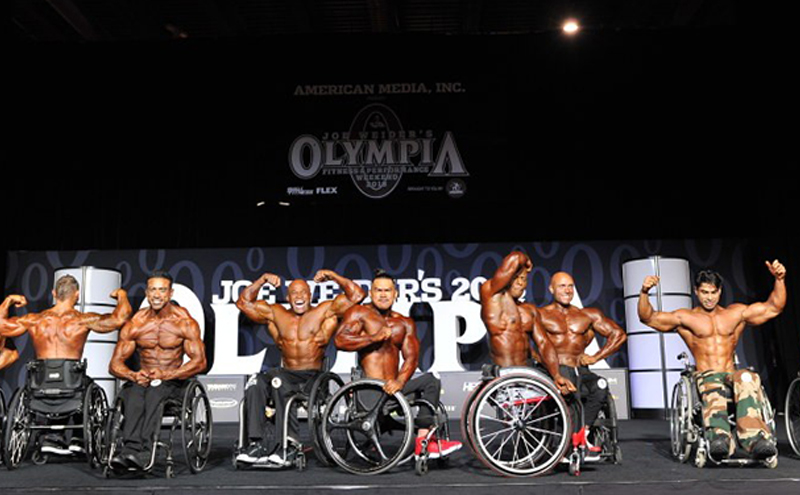
Setting New Standards for Wheelchair Olympia
Inclusivity in sports and the importance of wheelchair Olympia. Technology and equipment advancements for better performance. Increased funding and support for growth. Impact and inspiration for individuals with disabilities. Promoting achievements and breaking stereotypes.
Proposed Changes to Improve Future Competitions
To improve future competitions, proposed changes include increasing event numbers and participant diversity. Accessibility and accommodation for all competitors will be ensured, while judges receive specialized training to evaluate wheelchair athletes’ performances better. Partnerships with disability advocacy organizations aim to promote inclusivity, elevating competition and recognition.
How Will Technology Impact Wheelchair Olympia’s Future?
The future of Wheelchair Olympia will be shaped by the impact of technology. Advancements in prosthetics and assistive devices are enabling athletes to reach new heights. Additionally, virtual reality and other tech tools offer innovative training methods. As technology continues to evolve, the possibilities for enhancing Wheelchair Olympia are limitless.
The Role of Training and Nutrition in Wheelchair Olympia’s Future
Proper training and nutrition are crucial for optimal performance in Wheelchair Olympia. Athletes benefit from a balanced diet, supplements for muscle recovery, and adequate rest. Technology advancements like prosthetics and adaptive equipment further enhance performance.
Emerging Training Methods and Nutritional Strategies
Emerging training methods like plyometrics and resistance band training can enhance strength and agility, while balanced macronutrient intake and proper hydration are critical for optimal performance. The popularity of plant-based diets is increasing among athletes due to their anti-inflammatory properties. Customized nutrition plans can optimize performance and recovery.
Can Today’s Champions Adapt to the Future Standards?
Adapting to future standards is a challenge for athletes, including wheelchair Olympia champions. They need to be open-minded and willing to learn new techniques and technologies. The future may bring advanced equipment and a greater emphasis on inclusivity. Today’s champions can succeed with dedication and hard work.
Let’s Sum Up
The future of Wheelchair Olympia is looking bright with the introduction of new standards that aim to enhance the athlete’s experience. From significant milestones in Wheelchair Olympia history to current standards and proposed changes, it is clear that the sport has come a long way.
Technological advancements in wheelchair design and performance, along with emerging training methods and nutritional strategies, are set to revolutionize the competition. However, there will be challenges and opportunities for current champions as they adapt to the future standards.
Overall, the vision for Wheelchair Olympia is to create a platform that pushes boundaries, inspires athletes, and showcases the incredible abilities of wheelchair athletes. Together, we can set new standards and pave the way for an even more inclusive and exciting future for Wheelchair Olympia.

